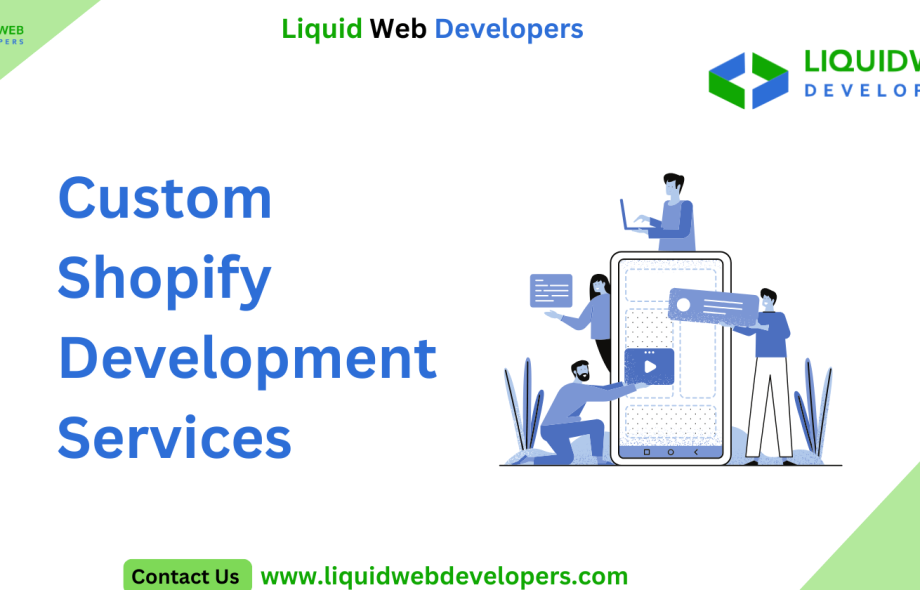Introduction
In today’s hyper-competitive e-commerce space, every decision about user experience, backend efficiency, scalability, and automation affects your growth trajectory. Shopify is a fantastic platform, but default tools and third-party apps only take you so far.
When your business demands unique workflows, smarter integrations, and long-term technical flexibility, it’s time to look beyond pre-built solutions. This is where custom Shopify development services come into play as a fix and strategy.
This article uncovers how custom-built Shopify stores give modern brands a measurable competitive advantage and why this matters more as your business scales.
1. Tailoring Technology to Business Logic
Every business has its own rhythm. Whether running flash sales every weekend or managing a dual storefront for retail and wholesale buyers, your store’s work should reflect that logic, not fight it.
With custom Shopify development services, you can:
Design checkout experiences that mirror your sales funnel.
Automate backend tasks based on real-time order data.
Create customer-facing tools that respond dynamically to behavior.
Off-the-shelf plugins might get you 60% there—but missing 40% is often the key to efficiency, growth, and better UX.
2. Breaking Free from Plugin Bloat
Many Shopify merchants experience “app overload.” Each plugin may solve one issue, but they slow down performance, conflict with each other, and often duplicate functionality.
A custom approach consolidates functionality in your theme or backend.
One custom-built feature can replace 3–4 apps.
You eliminate recurring app fees.
Your site loads faster and performs more reliably.
Fast-loading sites not only convert better but also rank higher in search engines. Most stores overlook this silent advantage.
3. Enabling Truly Unique Customer Experiences
It’s easy to blend in on Shopify. Thousands of stores use the same themes, product page layouts, and marketing flows. But shoppers remember brands that feel different.
With tailored development, you can build:
Interactive product configurators
Gamified shopping or loyalty experiences
Guided selling flows (like quizzes or multi-step advisors)
These aren’t available in Shopify’s theme store—they’re created through thoughtful, custom-coded UX powered by your unique vision.
And yes, custom Shopify development services make these ideas possible without compromising site stability.
4. Scaling Beyond Borders and Platforms
Growth doesn’t always mean more products. Sometimes it means
Expanding into new countries with localized storefronts
Selling via social platforms and marketplaces
Building headless front ends using Shopify as a backend
This demands an infrastructure that can scale—cookie-cutter Shopify setups can’t gracefully do that. Custom development lets you:
Optimize your store for international SEO and multi-language support.
Connect to region-specific logistics and tax systems.
Manage data intelligently between platforms like Amazon and Etsy and your warehouse tools.
The result? A Shopify store that grows with you instead of outgrowing you.
5. Thinking Beyond “Features”—Towards Future Systems
A key mindset shift is to stop thinking about websites regarding features and start thinking about systems. How does your storefront interact with your inventory? How do promotions connect with customer segments? How is real-time data used in retention campaigns?
Custom Shopify development services don’t just add features—they architect the systems your business runs on. These systems support:
Predictive analytics
Custom CRM pipelines
Automated merchandising and fulfillment logic
Instead of patching holes, you’re building a sturdy, scalable digital engine behind your brand.
Conclusion
Shopify facilitates an easy start, but you must have a malleable, stable foundation under the hood to take the reins. From gearing up for a new product release, global growth, or advanced workflow automation, custom development gives you the power and flexibility to confidently take the following steps.
Investing in custom Shopify development services is not purchasing code—it’s creating a technical plan for your long-term vision.
 :
https://in.pinterest.com/liquidwebdevelopers/
:
https://in.pinterest.com/liquidwebdevelopers/

